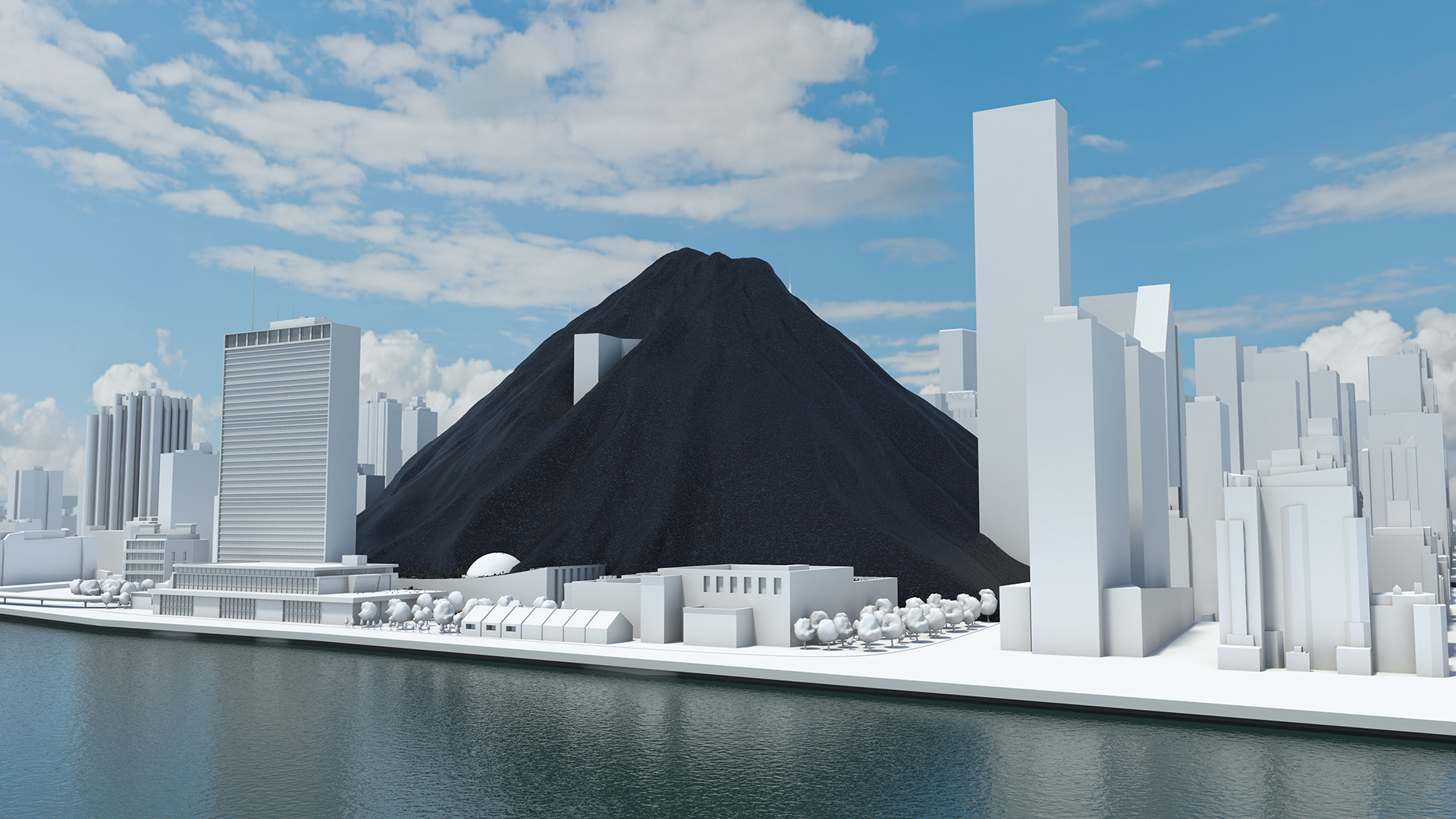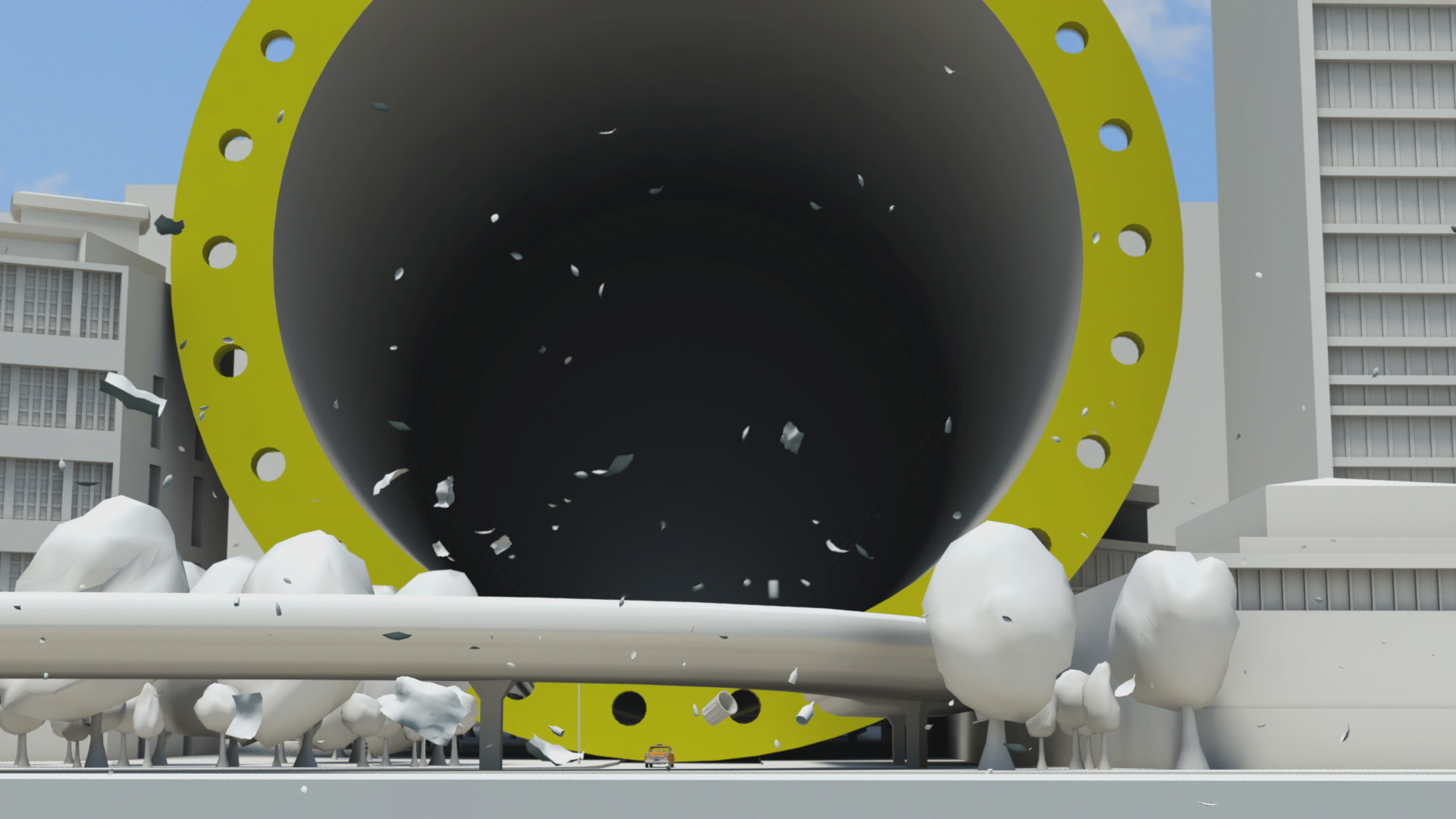CO2 emissions bury the UN Climate Summit: Why Carbon Capture and Storage is a critical part of the solution to climate change
Geneva, September 22, 2014, PR Newswire/ – A coal pile buries the UN Headquarters; gas races down 42nd Street and then New York is lost under a mountain of CO2. These dramatic CGI scenes, illustrating actual quantities, create an immersive journey that really brings home the sheer scale of global carbon emissions and the urgency for action.
This poignant four-minute film being launched today, as the UN Climate Summit in New York is kicking-off, allows us to visualize the critical part that carbon capture and storage (CCS) can play in limiting global temperature rise to 2°C above pre-industrial levels. Commissioned by the WBCSD and produced by Carbon Visuals the animation is a call to world leaders, industry experts, campaigners and scientists to help catalyze action and inform conversations about what is really needed to reduce carbon emissions.
Led by the World Business Council for Sustainable Development (WBCSD), and based on science and the latest understanding of the social and environmental challenges we face, Action2020 is a platform for business action on sustainable development to 2020 and beyond. It covers a range of technologies and solutions that address the key mitigation levers for climate change. This animation, supported by the group of companies working on the CCS business solution, focuses on this technology which is one of the essential solutions that is at risk of being overlooked.
A set of shorter clips are also being released, featuring some of the most impactful themes of the main film. These are intended for wide-spread sharing, in order to tell the story of global fossil fuel use, carbon emissions and the solution of carbon capture and storage.
Today we get over 80% of our energy from fossil fuels. CO2 is accumulating in the atmosphere. To stay below 2°C warming, we cannot emit more than 1 trillion tonnes of carbon. World population is expected to rise to 9 billion by 2050 with all these people having the same needs and aspirations as we do today. This means that the demand for energy will double by 2050. The most ambitious plans to replace fossil fuels with renewables see only about half of our energy needs being met by zero-carbon renewables by 2050. Even if we succeeded in getting 50% of our energy from renewables by 2050, because of the rise in total demand for energy, we will have reached a trillion tonnes of carbon and the concentration of CO2 will exceed the agreed limit of dangerous climate change.
To successfully manage the cumulative problem of climate change and stay within the emissions targets, we must have CCS in our portfolio of technologies. It is a group of technologies which keeps the CO2 out of the atmosphere by returning emissions deep below several layers of rock into the geosphere. However, CCS is poorly recognized as a solution to climate change and is making slow political progress. But this can be changed by policy-makers globally. A price on CO2 emissions coupled with ambitious global reduction targets would help enable CCS projects to be built and deployed extensively. To stay below one trillion tonnes of carbon emissions, we need a robust technology, policy, legal and infrastructure pathway to be implemented now. Only then do we stand a chance of returning to a natural net-zero carbon cycle.
Peter Bakker, President and CEO of the WBCSD said:
“WBCSD’s Action2020 platform presents a range of solutions that together will generate bold action on climate change. As part of this, we asked Carbon Visuals to create a piece of compelling narrative which took us from global fossil fuel use to focus on carbon capture and storage, an essential, but often overlooked contributor to staying below 2°C global warming. The resulting animation is both informative and starkly engaging. Among all of the documents, reports and images being released around the UN summit, we hope that this film will stand out and benefit all participants, as well as anyone who watches it around the world.”
Note to Editors
About the World Business Council for Sustainable Development (WBCSD)
The World Business Council for Sustainable Development (WBCSD), a CEO-led organization of some 200 forward-thinking global companies, is committed to galvanizing the global business community to create a sustainable future for business, society and the environment. Together with its members, the council applies its respected thought leadership and effective advocacy to generate constructive solutions and take shared action. Leveraging its strong relationships with stakeholders as the leading advocate for business, the council helps drive debate and policy change in favor of sustainable development solutions.
The WBCSD provides a forum for its member companies - who represent all business sectors, all continents and a combined revenue of more than $8.5 trillion, 19 million employees - to share best practices on sustainable development issues and to develop innovative tools that change the status quo. The council also benefits from a network of 70 national and regional business councils and partner organizations, a majority of which are based in developing countries.
www.wbcsd.org
Follow us on Twitter and LinkedIn
For more information, please contact: Irge Olga Aujouannet
WBCSD Global Communications Email: [email protected] Tel: +41-22-839-3129









